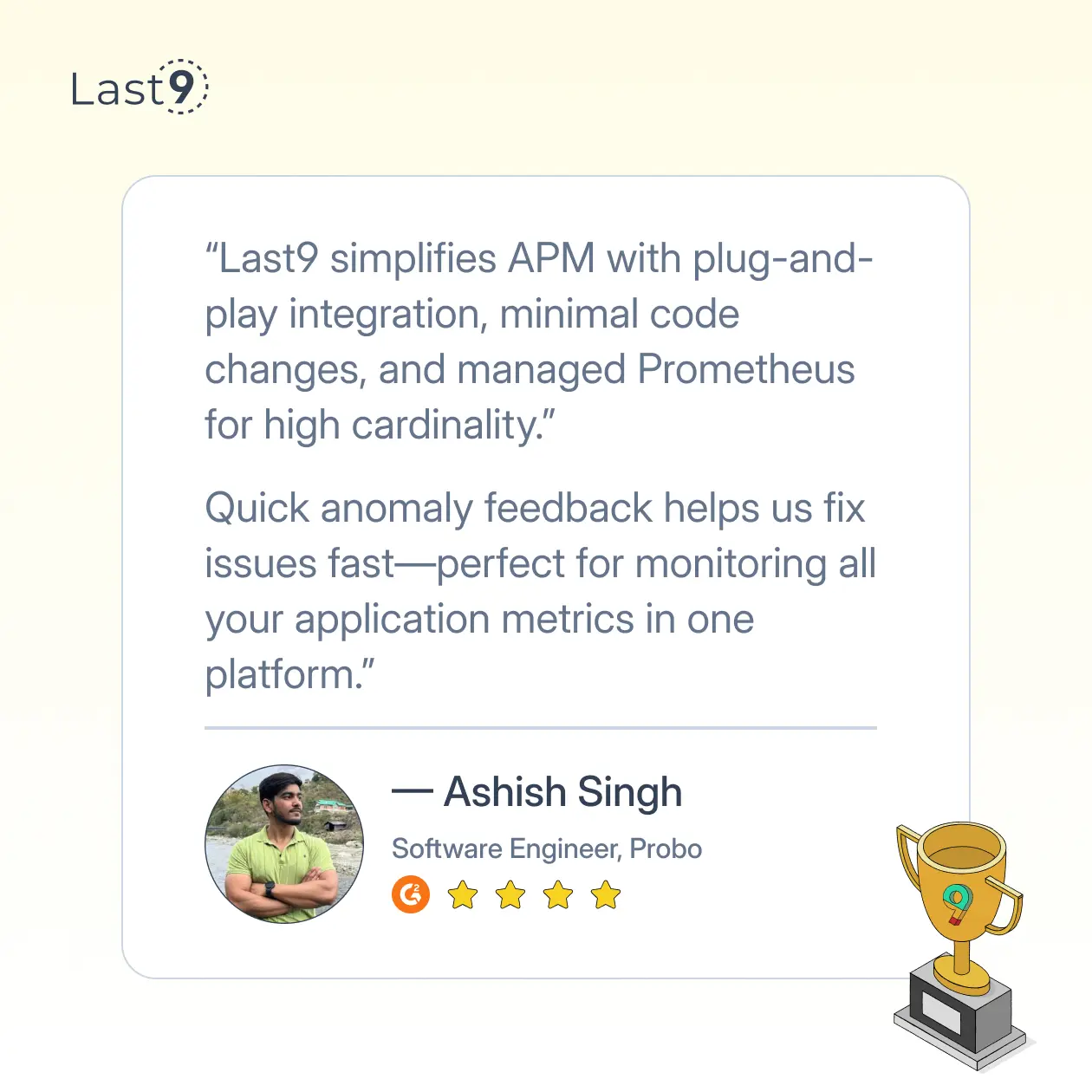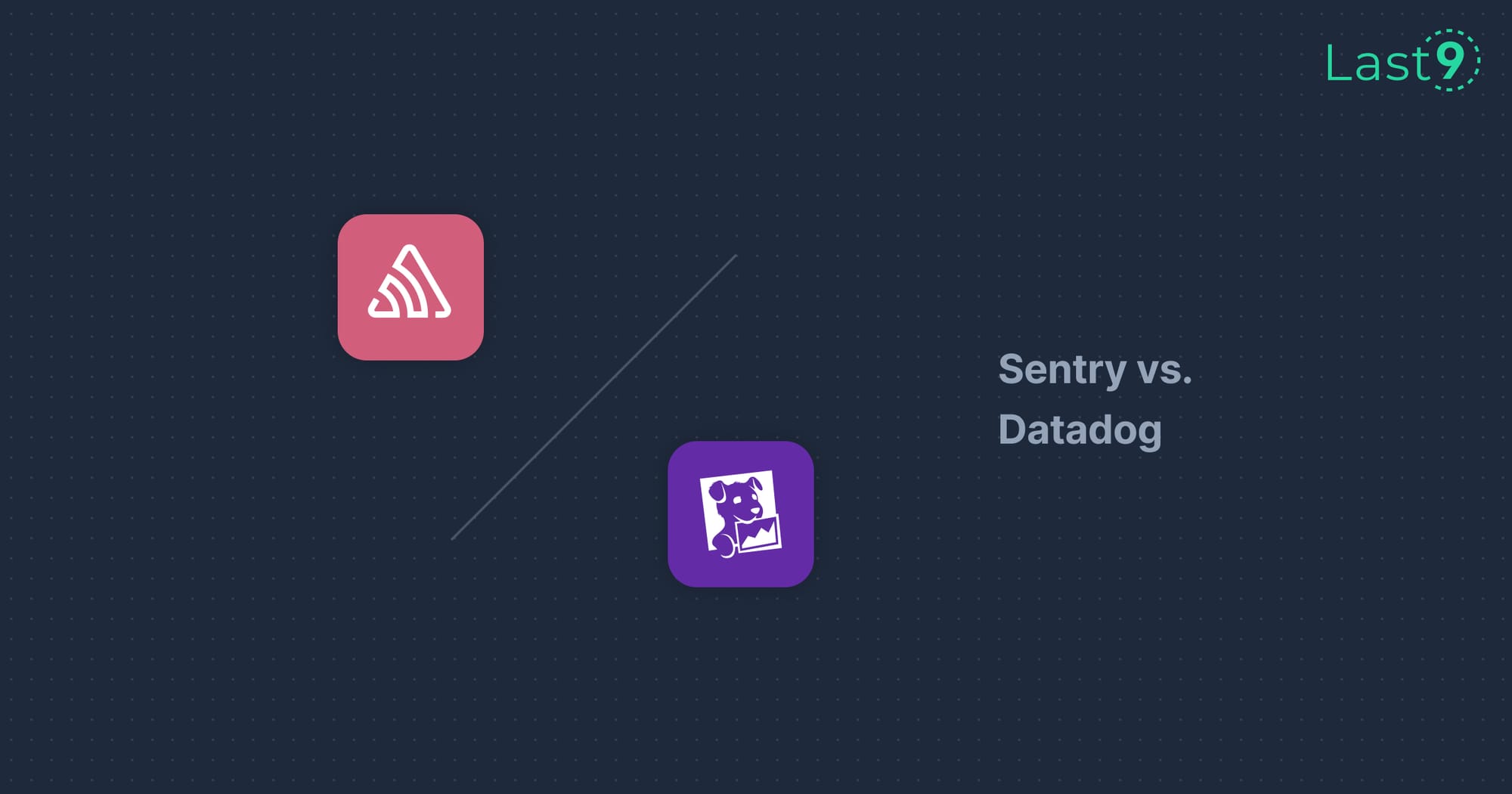If you're running Apache, you know how important it is to keep it running smoothly. Slow page loads, high resource usage, or even unexpected downtime can be a nightmare.
Monitoring Apache properly can save you from these headaches by catching issues early and optimizing performance.
This guide will walk you through everything you need to know about Apache monitoring—from basic log analysis to advanced observability tools. Let’s dive in.
Why Apache Monitoring Matters
Apache is a powerful web server, but like any software, it needs constant monitoring to ensure stability and efficiency. Here’s why monitoring is crucial:
- Performance Optimization: Detect slow requests, resource bottlenecks, and configuration issues before they impact users.
- Security & Compliance: Identify unauthorized access attempts and potential vulnerabilities that could compromise your system.
- Downtime Prevention: Get alerts before an issue takes down your server, helping maintain high availability.
- Resource Management: Ensure CPU, memory, and disk usage are within healthy limits to prevent performance degradation.
Example
Imagine you have an e-commerce website running on Apache.
If an unexpected traffic surge occurs during a sale, inadequate monitoring could lead to server crashes or slow response times, frustrating customers and leading to lost revenue. With proper monitoring in place, you could set up alerts to scale resources dynamically and prevent downtime.
5 Key Metrics to Monitor in Apache to Consider
To get a complete picture of your Apache server’s health, keep an eye on these essential metrics:
1. Request Throughput
This metric tracks the number of requests per second (RPS) Apache handles. A sudden drop in RPS might indicate issues with the backend, database, or even a network outage.
Example
Run the following command to get a quick idea of how many requests your Apache server is handling:
awk '{print $9}' /var/log/apache2/access.log | sort | uniq -c | sort -nr | head -10This will show the most common HTTP status codes returned, helping you identify problems.
2. Response Time
Response time measures how long Apache takes to serve requests. An increasing response time might point to overloaded resources, slow backend services, or inefficient application code.
Example
Using Apache’s built-in server-status module (explained later), you can see real-time request processing times.
3. Active Connections
This metric shows the number of concurrent users. If this spikes, you might need more resources or load balancing to distribute traffic efficiently.
Example
Check active connections with:
netstat -an | grep :80 | wc -lThis counts the number of active connections to your Apache server on port 80.
4. CPU & Memory Usage
If Apache is consuming excessive CPU or memory, it could be due to misconfigurations, memory leaks, or inefficient modules.
Example
Monitor real-time CPU and memory usage with:
top -u www-dataThis will display Apache’s resource consumption for the www-data user, which typically runs the web server.
5. Error Rates (4xx, 5xx Status Codes)
Too many 4xx (client errors) or 5xx (server errors) can indicate misconfigurations, broken endpoints, or even attacks.
Example
Find the most common error responses with:
grep " 5[0-9][0-9] " /var/log/apache2/access.log | wc -lThis helps identify recurring server-side errors.
6. Traffic Spikes & Bottlenecks
Monitoring traffic patterns helps predict potential issues and scale accordingly.
Example
Use apachetop to see real-time request statistics:
apachetop -f /var/log/apache2/access.logHow to Monitor Apache Logs
Logs are your first line of defense when debugging Apache performance issues. The two main log files are:
- Access Logs (
access.log) – Shows every request made to your server, useful for tracking traffic and identifying errors. - Error Logs (
error.log) – Contains details of server errors, misconfigurations, or security issues.
Using tail for Real-Time Log Monitoring
A quick way to view logs in real-time:
tail -f /var/log/apache2/access.logFor error logs:
tail -f /var/log/apache2/error.logGrep for Specific Issues
Find 5xx errors:
grep " 5[0-9][0-9] " /var/log/apache2/access.logFind bot traffic:
grep -i "bot" /var/log/apache2/access.log5 Must-Know Tools for Apache Monitoring
While manual log analysis is useful, automated monitoring tools provide real-time insights, proactive alerts, and historical data analysis, making Apache server management more efficient.
Here are some of the best tools for Apache monitoring, along with their key features and ideal use cases.
Last9 (Recommended for Observability)
If you’re looking for a managed observability solution that balances performance and cost, Last9 is a great choice.
Trusted by industry leaders like Games24x7, CleverTap, and Replit, Last9 is a telemetry data platform designed to optimize cloud-native monitoring without compromising efficiency.
It seamlessly integrates with OpenTelemetry, Prometheus, and other observability tools to unify metrics, logs, and traces, making it easier to manage high-cardinality data.
Through its Control Plane’s smart alerting and real-time metrics, Last9 empowers engineering teams with deeper insights into system performance, operational intelligence, and anomaly detection.
Best Features:
- Prebuilt dashboards with Apache-specific metrics
- AI-powered anomaly detection and predictive analytics
- Seamless integration with OpenTelemetry and Prometheus
- Cost-efficient, high-performance monitoring for cloud-native environments
Ideal For: Organizations seeking a scalable, budget-friendly observability solution with real-time monitoring and smart alerting to optimize Apache performance.

Prometheus + Grafana
Prometheus is a metrics collection tool that scrapes Apache performance data, while Grafana provides visualization and alerting through customizable dashboards. Together, they create a powerful open-source monitoring stack for Apache.
Best Features:
- Scalable and efficient time-series data collection
- Customizable dashboards for Apache logs and metrics
- Query-based alerting for proactive monitoring
Ideal For: DevOps teams and organizations using an open-source stack for monitoring and visualization.
Nagios
Nagios is a reliable tool for uptime and performance monitoring, widely used for Apache health checks and alerting on server status, resource usage, and response times. It supports both agent-based and agentless monitoring.
Best Features:
- Customizable Apache health checks and alerting
- Strong community support with a wide range of plugins
- Historical performance data for troubleshooting
Ideal For: IT administrators needing a robust, on-premise monitoring solution for Apache uptime and performance tracking.
New Relic
New Relic provides deep performance analysis and distributed tracing, making it ideal for pinpointing slow transactions and performance bottlenecks in Apache environments. It offers full-stack observability with AI-driven insights.
Best Features:
- Distributed tracing to analyze Apache request flow
- Detailed transaction performance breakdown
- AI-powered anomaly detection and alerting
Ideal For: Large-scale applications that require detailed Apache performance analysis, including tracing and end-to-end observability.
Datadog
Datadog is a full-fledged monitoring tool that integrates seamlessly with Apache, providing real-time logs, metrics, and AI-powered anomaly detection. It offers custom dashboards and supports cloud-based monitoring.
Best Features:
- Real-time Apache log analysis and metrics
- AI-driven anomaly detection and proactive alerts
- Cloud-native monitoring with seamless third-party integrations
Ideal For: Organizations looking for a comprehensive monitoring platform that covers Apache, infrastructure, and application performance in one unified solution.
Choosing the Right Apache Monitoring Tool
- For real-time observability with predictive insights, Last9 is the best choice.
- For open-source, customizable monitoring, Prometheus + Grafana provides great flexibility.
- For reliable uptime and performance tracking, Nagios is a solid option.
- For deep performance analysis and tracing, New Relic offers advanced observability.
- For full-stack monitoring with AI-driven analytics, Datadog is the most comprehensive solution.
Selecting the right tool depends on your infrastructure, monitoring needs, and scalability requirements.
Setting Up Apache Status Module
Apache has a built-in module to track real-time performance metrics.
Enabling the Status Module
- Open your Apache configuration file:
sudo nano /etc/apache2/mods-enabled/status.conf- Add the following configuration:
<Location /server-status>
SetHandler server-status
Require ip 192.168.1.0/24 # Restrict access to internal network
</Location>- Restart Apache:
sudo systemctl restart apache2- Access the status page:
http://your-server-ip/server-statusBest Practices for Apache Monitoring
- Set Up Alerts – Use monitoring tools to notify you about critical issues.
- Analyze Traffic Patterns – Helps in capacity planning and preventing overloads.
- Rotate Logs Regularly – Prevents excessive disk usage.
- Optimize Configuration – Adjust settings based on performance insights.
- Secure Your Server – Block malicious IPs and implement proper authentication.
Conclusion
Apache monitoring isn’t just about keeping an eye on logs—it’s about proactively maintaining performance, security, and uptime. By leveraging built-in tools and modern observability platforms like Last9, you can ensure your web server runs smoothly at all times.
FAQs
1. Why is monitoring Apache important?
Monitoring Apache ensures optimal performance, uptime, and security by tracking key metrics like request rates, response times, error logs, and resource usage. It helps identify issues before they impact users.
2. What are the key metrics to track in Apache monitoring?
Important metrics include CPU and memory usage, request per second, response time, error rate, active connections, and throughput. Tracking these helps maintain performance and troubleshoot issues efficiently.
3. What tools are best for monitoring Apache?
Popular tools include Last9 for real-time observability, Prometheus + Grafana for open-source monitoring, Nagios for uptime tracking, New Relic for deep performance analysis, and Datadog for full-stack monitoring.
4. How can I set up Apache monitoring?
You can enable Apache’s built-in status module, use monitoring tools like Prometheus or Datadog, configure log analysis, and set up alerts to detect anomalies in real-time.
5. How does Apache log monitoring help in troubleshooting?
Analyzing Apache access and error logs helps identify slow requests, failed transactions, security threats, and server misconfigurations, allowing for faster issue resolution and improved server performance.



